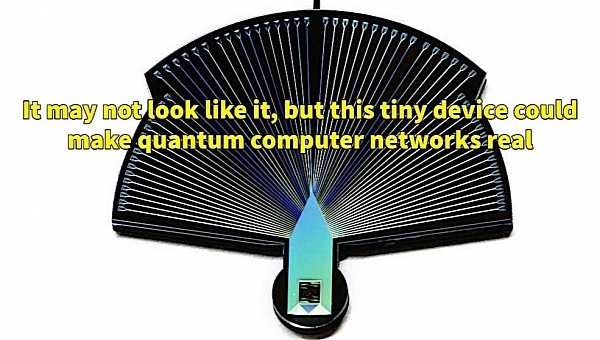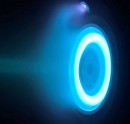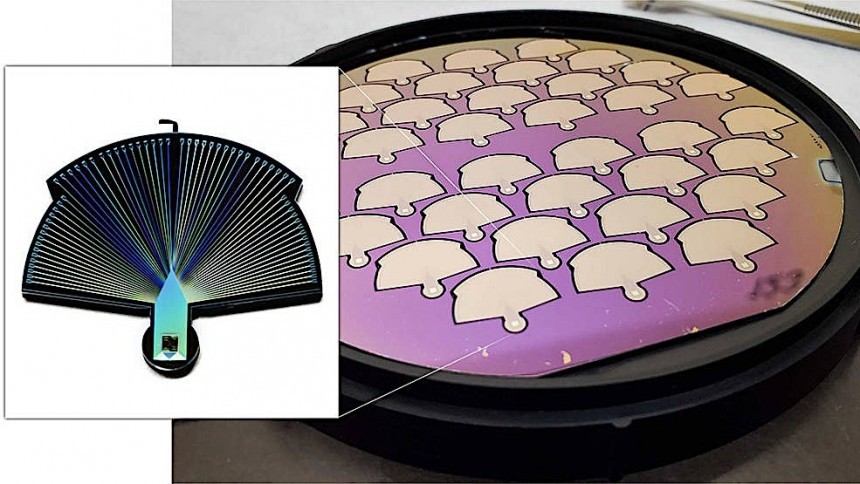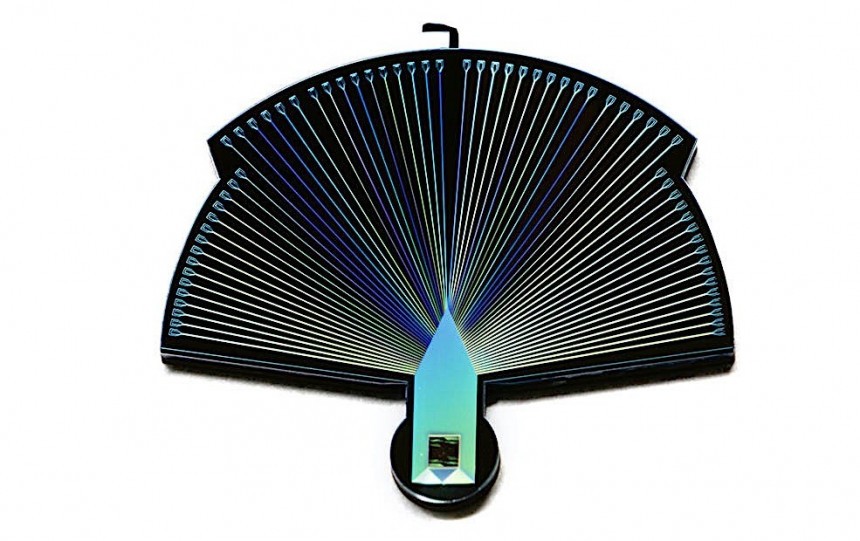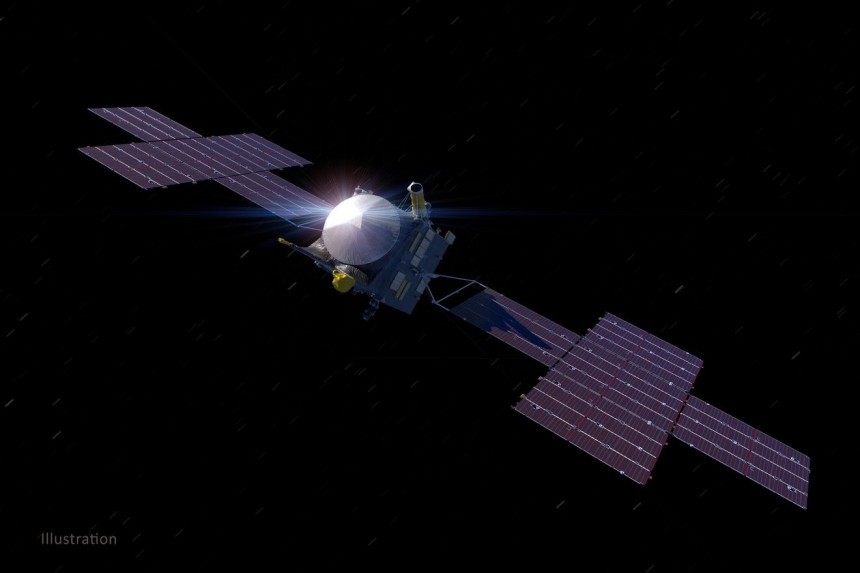Do you know what photons are? They are one of the fundamental particles of light (but also other electromagnetic radiation), so small they don't actually have a mass. Yet we interact with them on a daily basis, in the light we perceive with our eyes, or in the devices we constantly use to go about our lives.
Although we, average Joes, give photons little importance and credit, each and every one of them could be hugely important for the future of our species, provided we learn how to properly use them. Like, say, they could prove essential for the evolution of quantum computing.
We all consider our modern-day computers to be very advanced, but quantum ones, once and if they get here in large enough numbers, could put them all to shame in terms of how fast they can perform their duties. And that’s even more so if they can be networked so that they can communicate with one another. But quantum computer networking has proven so far a very tough nut to crack.
You all know how today’s traditional computers (yes, we’ve come to call them that) work when talking with one another. They store and use data as a binary code, using 1s and 0s, and pass it along to other computers through either physical or wireless means. All the data they use can be copied, allowing for it to be transmitted, but also for that magical thing we call computer memory to be possible.
Quantum computers are significantly different, in that copying data for storage or transmission is not possible. That’s because such machines don’t encode data as 1s and 0s, but as fundamental particles, including photons, through superposition and entanglement.
Additionally, unlike 1- and 0-coded information, fundamental particles degrade after just a few miles when transmitted through physical means, like, say, optical fiber. So a quantum computer network in the traditional sense is out of the question.
How, then, can we create a network of superfast computers that can be used to advance our goals?
NASA thinks it has the answer, and that answer is PEACOQ. That’s short for Performance-Enhanced Array for Counting Optical Quanta, and in essence, is nothing more than a dime-sized (13 microns across) detector printed on a silicon wafer. It contains 32 niobium nitride superconducting nanowires, each of them 10,000 times thinner than a human hair, and connectors that fan out to form something that’s not unlike the peacock bird’s plumage.
Despite its tiny size, the detector is a pretty potent device. It is capable of measuring single photons “with a precision of a fraction of a nanosecond.” More precisely, it should be able to detect every photon that hits it within 100 trillionths of a second, to as much as 1.5 billion of them per second – and that’s like counting individual droplets of water in the spray of a firehose, to use NASA’s analogy.
As per NASA and Caltech, the main entities behind the project, that’s something never achieved before, and could open the doors to a dedicated quantum computer network that could communicate at distances of thousands of miles.
The idea of such a network is quite simple. A series of satellites in orbit would act as relays for computer data. They would generate pairs of entangled photons that would be beamed down to computers on the ground, which can be separated from each other by vast distances. Usually, the entangled photons and the data they contain would be affected by the large distances involved. Backed by the PEACOQ’s ability to individually count photons, but also to turn each and every one of them in data-filled electrical pulses, the computers should, however, be able to make sense of them in no time.
Some logistic issues could arise, though, when it comes to using the detector, as for it to work as intended (more to the point, for the nanowires to remain in a superconducting state, thus capable of detecting photons) it has to be kept in places with temperatures of minus 458 degrees Fahrenheit (minus 272 degrees Celsius).
The technology is not yet ready for real-world testing, but the people involved do say lab tests are planned in the near future. Yet, the hardware that inspired PEACOQ will get to fly very soon.
It’s called Deep Space Optical Communications (DSOC) and will be deployed with the asteroid-hunting spaceship Psyche in October this year. Although it will not be used to send back quantum data, DSOC is meant to show if and how Earth can communicate with deep space using high-bandwidth optical hardware.
The system is equipped with a near-infrared laser transmitter that will send photons to a receiver here on Earth. Most importantly, it too comes with a photon-counting piece of hardware, in this case, a camera, which will be used to receive a laser beam from the surface of our planet.
Don't expect any of the ideas mentioned here to become a reality any time soon, though. As it happens with anything so revolutionary, we're probably years away from a workable, scalable such device. We'll keep an eye on things, though, and let you know when more progress in this field is made.
We all consider our modern-day computers to be very advanced, but quantum ones, once and if they get here in large enough numbers, could put them all to shame in terms of how fast they can perform their duties. And that’s even more so if they can be networked so that they can communicate with one another. But quantum computer networking has proven so far a very tough nut to crack.
You all know how today’s traditional computers (yes, we’ve come to call them that) work when talking with one another. They store and use data as a binary code, using 1s and 0s, and pass it along to other computers through either physical or wireless means. All the data they use can be copied, allowing for it to be transmitted, but also for that magical thing we call computer memory to be possible.
Quantum computers are significantly different, in that copying data for storage or transmission is not possible. That’s because such machines don’t encode data as 1s and 0s, but as fundamental particles, including photons, through superposition and entanglement.
How, then, can we create a network of superfast computers that can be used to advance our goals?
NASA thinks it has the answer, and that answer is PEACOQ. That’s short for Performance-Enhanced Array for Counting Optical Quanta, and in essence, is nothing more than a dime-sized (13 microns across) detector printed on a silicon wafer. It contains 32 niobium nitride superconducting nanowires, each of them 10,000 times thinner than a human hair, and connectors that fan out to form something that’s not unlike the peacock bird’s plumage.
Despite its tiny size, the detector is a pretty potent device. It is capable of measuring single photons “with a precision of a fraction of a nanosecond.” More precisely, it should be able to detect every photon that hits it within 100 trillionths of a second, to as much as 1.5 billion of them per second – and that’s like counting individual droplets of water in the spray of a firehose, to use NASA’s analogy.
The idea of such a network is quite simple. A series of satellites in orbit would act as relays for computer data. They would generate pairs of entangled photons that would be beamed down to computers on the ground, which can be separated from each other by vast distances. Usually, the entangled photons and the data they contain would be affected by the large distances involved. Backed by the PEACOQ’s ability to individually count photons, but also to turn each and every one of them in data-filled electrical pulses, the computers should, however, be able to make sense of them in no time.
Some logistic issues could arise, though, when it comes to using the detector, as for it to work as intended (more to the point, for the nanowires to remain in a superconducting state, thus capable of detecting photons) it has to be kept in places with temperatures of minus 458 degrees Fahrenheit (minus 272 degrees Celsius).
The technology is not yet ready for real-world testing, but the people involved do say lab tests are planned in the near future. Yet, the hardware that inspired PEACOQ will get to fly very soon.
The system is equipped with a near-infrared laser transmitter that will send photons to a receiver here on Earth. Most importantly, it too comes with a photon-counting piece of hardware, in this case, a camera, which will be used to receive a laser beam from the surface of our planet.
Don't expect any of the ideas mentioned here to become a reality any time soon, though. As it happens with anything so revolutionary, we're probably years away from a workable, scalable such device. We'll keep an eye on things, though, and let you know when more progress in this field is made.
